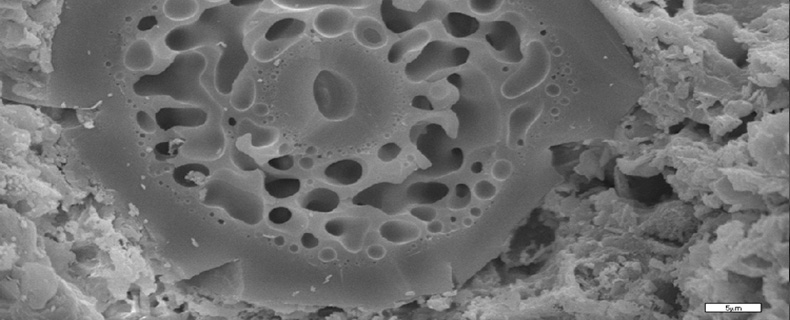| School |
Natural Sciences |
Academic Unit
|
Geology Department |
Level of Studies
|
Undergraduate |
Course Code
|
GEOL_012 |
| Εξάμηνο σπουδών |
2ο |
Course Title
|
GIS and Remote Sensing in Applied Geology |
Independent Teaching Activities
|
Lectures, laboratory, Tutorial |
Weekly Teaching Hours
|
2 (lect.) / 2 (lab.)/ 1T |
| Credits |
5 |
Course Type
|
Field of Science (GIS & Remote Sensing) |
Prerequisite Courses
|
|
Language of Instruction & Examinations
|
Greek |
Is the Course offered to Erasmus Students
|
Yes (in English) |
| Course Web-Page (URL) |
https://eclass.upatras.gr/courses/GEO307/ |
Learning Outcomes
|
The course aims at introducing students with Cartography and Geographic Information Systems technologies. By the end of this course the students will be able to:
- recognize different types of maps and to interpret their contents.
- demonstrate knowledge and understanding of basic principles and concepts related to Cartography and GIS.
- define the geographical data as vectors and rasters and information as spatial and non- spatial.
- study maps of Greece and to recognize the projection systems.
- use geographic data in a GIS environment, to process it and to produce maps.
- generate DEM from digitized contour lines and to construct topographic and elevation profiles.
- value the significance of maps as tools of communication, information exchange and decision-making on a diachronic basis.
By the end of this course the student will, furthermore, have developed the following skills:
- Locate his position in the field and on the map
- Georeference satellite remote sensing data, airphotos, maps and digitize data
- Import, save, process spatial and non spatial data in GIS environment
- Produce simple digital maps
|
General Competences
|
- Searching, analysis and synthesis of facts and information, as well as using the necessary technologies
- Decision making
- Autonomous (Independent) work
- Work in an international enviroment
- Work in an interdisciplinary enviroment
- Work design and management
- Respect to natural environment
|
| Syllabus |
The course is organized in 4 teaching circles which are described below.
The course is organized in 3 teaching circles which are described below.
Circle Α:
- Cartography – Typology and components of maps.
- History of Cartography.
- Basic principles of cartographic design – Scale – Spatial Resolution.
- Map Projection. Introductory concepts (geoid, spheroid, ellipsoid, geographic coordinates, datum, grid systems, types of projection, parameters).
- Hellenic Geodetic Reference Systems.
- Distortions, Mathematic models for geometric correction and resampling. Geometric correction of maps and satellite images.
Circle Β:
- Theory of GIS, History, Structure.
- Spatial and non- spatial data, Digitization,
- Raster and vector data, structure of GIS system
- Transformation of vector data to raster data
- Thematic layer and thematic maps
Circle C:
- Topology
- Introduction to Spatial Analysis
- Introduction to Digital Elevation/ Surface Models
- Construction of topographic and elevation profiles.
Circle D:
- Case studies of the use of Geographic Information Systems in Geology.
- Global Navigation Satellite Systems or Global Positioning Systems.
- Combined use of GIS and GNSS
|
| Delivery |
Lectures with the use of PowerPoint slideshow. |
Use of Information & Communication Technology
|
Laboratories with the use of specialized software for GIS (ESRI, ARCGIS) and Image Processing (ERDAS IMAGINE) in the departmental computer lab. Training in the use of GPS in the field. |
Teaching Methods
|
| Activity |
Semester workload |
| Lectures in Theory |
2X13 = 26 |
| Laboratory exercises in GIS and RS |
2X13 = 26 |
| Writing reports of the laboratory exercises |
2X13 = 26 |
| day field practice in the use of GNSS |
12 |
| Hours for private study and bibliography analysis of the student |
35 |
| Total number of hours for the Course |
125 |
|
Student Performance Evaluation
|
Written examination after the end of the semester (Gth70%)
Written reports for each laboratory exercise (Glab30%)
Minimum passing grade: 5.
Final Course Grade (FCG)
FCG = ( Gth + Glab ) / 2 |
Attached Bibliography
|
- "Cartography and introduction to GIS)" Nikolakopoulos, 2018.University of Patras Editions (in Greek language)
- Laboratory Notes: "Laboratory exercise of cartography and GIS", K. Nikolakopoulos, H Simoni, 2018.University of Patras Editions (in Greek language)
- Laboratory Notes: "Laboratory exercise of digital processing of Remote Sensing data combined with GIS", D. Vaiopoulos G. Skianis K. Nikolakopoulos, Athens University Publ. 2006, p. 178. (in Greek language).
|






























